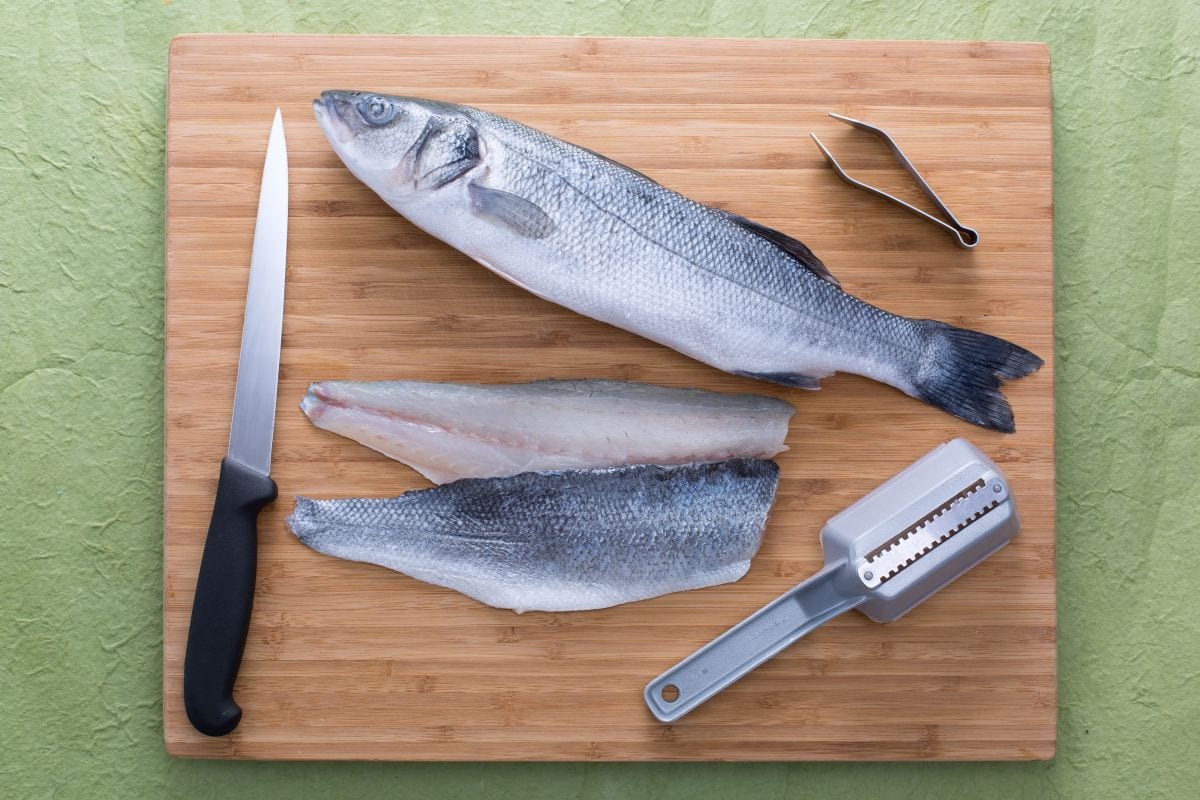How to clean the seabass

- Gluten Free
- Lactose Free
- Energy Kcal 221
- Carbohydrates g 1.6
- of which sugars g 1.6
- Protein g 44.6
- Fats g 4.1
- of which saturated fat g 0.95
- Cholesterol mg 130
- Sodium mg 186
- Difficulty: Average
- Prep time: 20 min
- Serving: 2
PRESENTATION
Freshly caught branzino is a big deal along the Venetian coast, especially in Veneto. I mean, picking the right fish is just as important as the recipe itself. When you are learning how to clean sea bass, the Italians—who really know their stuff—pay close attention to details. And the scales? They've got to be silver and shiny. Plus, clear and bright eyes are a must. And you want firm flesh that bounces back. And can't go wrong with that. This fish, with its slender body and two dorsal fins, is called branzino in the Venetian dialect, which is awesome.
The tradition runs deep here. Seriously. The belief? The best branzino always starts with checking for freshness. Those classic Venetian dishes—like sea bass baked in the oven or cooked 'all’acqua pazza'—begin with a fish chosen by an expert eye. So... A comprehensive sea bass cleaning guide is essential, no question, especially for anyone aiming for the best flavor and texture in an authentic meal. And listen, for those curious about cleaning branzino the Italian way, it’s more than just a task; it’s like, a kind of ritual.
The process usually begins with a rinse. Then, you go on to remove the scales, or descaling branzino, until the skin feels smooth. After that, cutting open the belly and carefully removing the insides gives you a clean, fresh canvas. So, what's next? You can bake, grill, or poach it in herby broths. In Veneto, home cooks pay special attention to filleting sea bass, ensuring every bit of tender, moist flesh remains intact. Once cleaned, branzino can be used in many ways: laid out in a roasting pan with lemons, sprinkled with local herbs, or gently poached to let the delicate flavors shine. These sea bass preparation techniques open up possibilities for simple, Italian dishes that really, really taste like the sea and feel right at home in any kitchen. With a focus on freshness and technique, branzino becomes an integral part of Italian coastal cuisine, offering endless culinary adventures for those eager to explore. For real.
- INGREDIENTS
- Sea bass (sea bass) 1.1 lbs (500 g)
How to clean the seabass (bass)

To clean and fillet the seabass, start by descaling it: place it in the sink and run cold water while using the appropriate tool 1 or a knife blade. Placing it in the sink for this operation will prevent scales from scattering. Rub the descaling tool starting from the tail to the head of the fish. Repeat this operation several times until the seabass is completely descaled. Transfer the seabass to a cutting board to gut it: using scissors, make an incision starting from the end of the belly and following the entire stomach to the head 2. Remove the internal viscera 3.

To prevent the bitter taste of the viscera from remaining, thoroughly rinse the inside of the fish under running water 4. Proceed at this point with the filleting of the seabass: take a sharp knife and make a deep incision along the back, reaching the fish's backbone, following the line of the dorsal fins 5. To extract the first fillet, slide the knife blade horizontally along the work surface, from the seabass's fin to the head 6.

Now proceed by separating the fillet from the fish with a clean cut at the gills 7: slightly tilt the knife diagonally to make a good cut. Then proceed to the other side of the fish to obtain the second fillet: pass the knife blade from the tail to the gills 8, then make a cut at the gills to detach it from the backbone. Now remove the dorsal fins. You will now have obtained the two fillets. At this point, you can cut the head off the seabass by diagonally tilting the knife blade at the gills. Use a knife to lift the lateral bones on the fish's belly 9.

Remove them completely from the flesh of the seabass 10 and use kitchen tweezers to remove any remaining bones from the fillets 11. Finally, if your preparation requires, you can remove the fish's skin: slide a very thin knife between the skin and the flesh of the fish to separate the two parts 12. Perform this operation very delicately to keep the fillet intact. Your seabass fillets are ready to be used in your preparations!